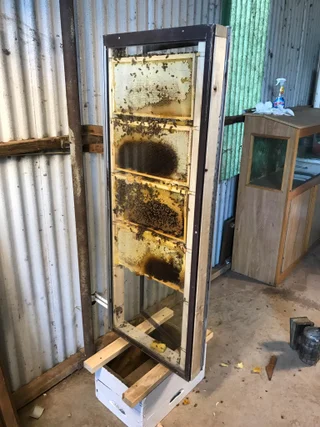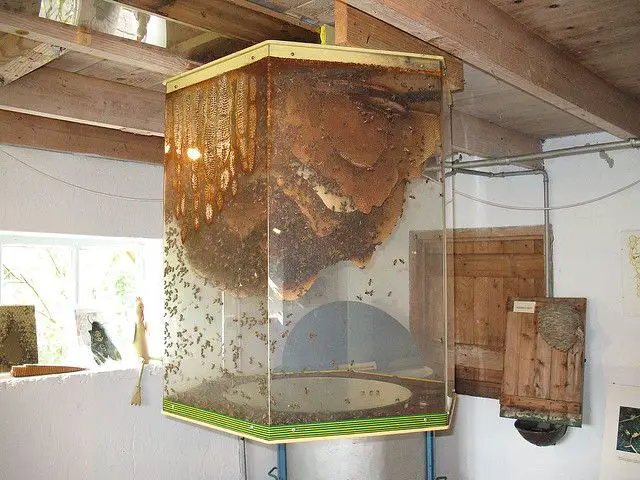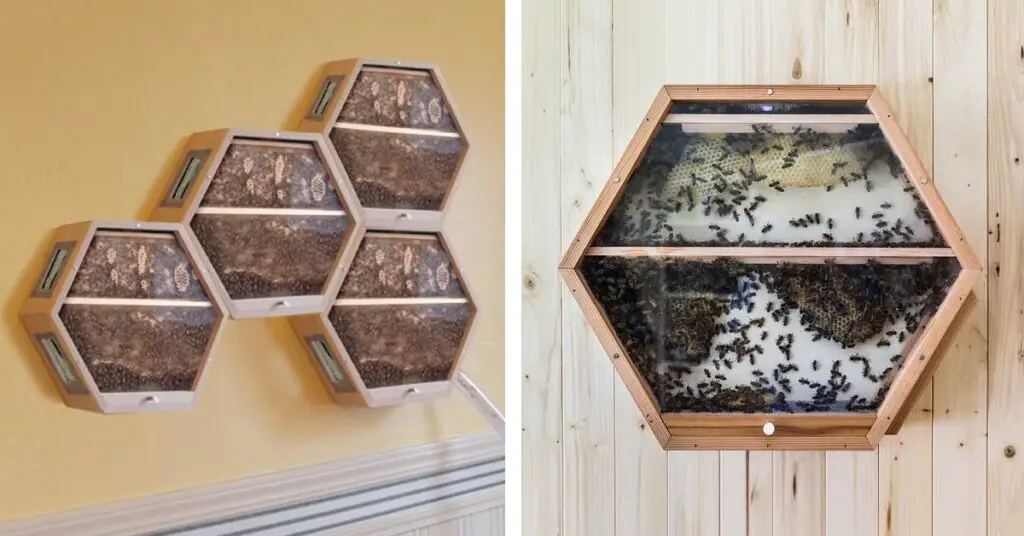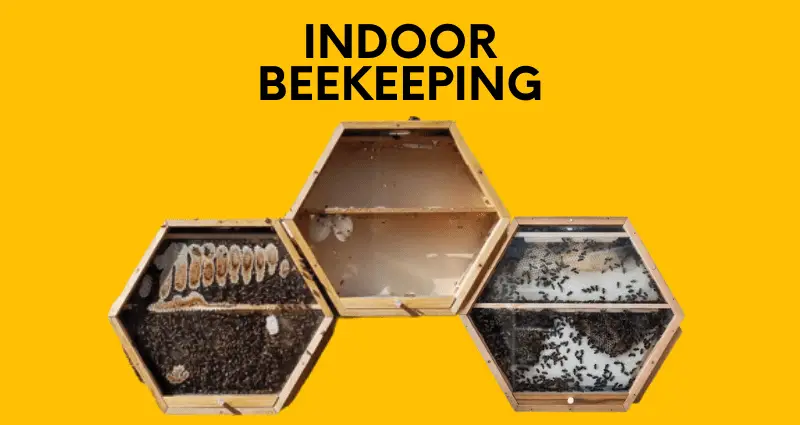Indoor beekeeping is growing in popularity, and for a good reason. The practice offers many benefits, especially for hobby beekeepers intending to maintain smaller hive colonies.
Utilizing a bit of ingenuity and modern technology, you can keep honeybees close to home. Here are the reasons why you need to consider this practice.
Can Honey Bees Live Indoors?
The answer is yes!
Just as people raise chickens in urban and suburban areas, you can keep bees in urban, suburban, and high-rise settings.
Most people think that honey bees need a lot of room, but they don’t — you can easily maintain a bee colony in a space about the size of a small bookshelf.


Reasons To Start An Indoor Beehive
Convenient For City Dwellers
Indoor beekeeping doesn’t require as much space. If you live in the city, you do not have much room to put an outdoor beehive. The free space is probably small and would only support one tiny hive anyway.
You don’t need to worry about having suitable backyard beekeeping. You can keep bees in almost any type of structure, as long as it has an entrance and exit large enough for the bees to come and go. Indoor observation hives are an exciting technology for urban beekeeping.
Great Way To Get Started With Beekeeping
Another reason you might want to consider indoor beekeeping is that it can help you get acquainted with the craft before making a final decision. It will also allow you to gain experience without risking money.
Because there are so many varieties of bees, you may want to try a few before deciding which one is best for your needs. Indoor beekeeping is the right way to start harvesting honey.
More Control Over Your Beehive
Indoor Beekeeping is also less difficult than outdoor beekeeping. When keeping bees outdoors, there are many more things to worry about. You have to worry about your neighbors, your neighbors’ neighbors, and even their pets!
However, with indoor beekeeping, your bees are safe within the confines of your home. You don’t have to worry about them getting loose or hurting someone else.
Therapeutic Hobby
Beekeeping can be therapeutic because it allows you to escape life’s stresses and worries. You will enjoy watching the bees fly around their hive, making honey or looking for pollen to bring back home.
When you get immersed, you forget about your stress and think about something completely different–bees.
Family Friendly Hobby
Indoor beekeeping is fun for your whole family. You can teach children about bees and what they do.
You can also teach them how to extract honey from the honeycombs stored in their honeybee hive. They will learn how important bees are to our ecosystem by being exposed to these creatures in an up-close and personal way.
Click here to read other ways beekeeping is beneficial for you and your environment.
Indoor vs. Outdoor Beehive
There’s a rather large difference between indoor and outdoor beehives. As their names imply, an indoor hive is placed indoors, while an outdoor hive is located outside. But there are many more differences between the two.
- An indoor hive is usually smaller than an outdoor hive. Indoor hives can be as small as a shoebox, while outdoor hives are typically larger.
- Outdoor beehives are larger because they house more bees. Outdoor hives house anywhere from 30,000 to 60,000 bees, while indoor beehives house anywhere from 8,000 to 15,000 bees.
- Indoor hives usually come with a small, plastic window made of clear Plexiglass or Lucite through which you can observe your bees. This is a great way to watch and learn about the inside of a beehive without opening it up. Since indoor beehives usually have these windows, they often have fewer frames than outdoor hives. Hence, outdoor hives don’t allow this observation opportunity.
- An outdoor beehive is exposed to the elements such as rain, snow, wind, and other inclement weather. An indoor beehive is placed indoors and shielded from these elements.
- An outdoor beehive requires more maintenance than an indoor. It needs to be replaced more often due to rotting or molding from exposure to water.
Considerations Before Starting An Indoor Beehive
Legal Requirements
Like any other domesticated stock, you are required to maintain the colony after deciding to keep them. Laws and regulations vary from state to state, so familiarizing yourself with your local requirements is the best first step before deciding to build an indoor beehive.
A general rule of thumb is that the health and safety of both bees, your household, and your neighbors should be considered. Neglect and mismanagement can cause harm to both people and the bees, so please be certain of your commitment before starting.
Be A Good Neighbor
Most municipal codes do not require beekeepers to notify their neighbors of their hives, but it’s often good practice. Of course, some neighbors will not be happy with your hobby, so you must inform them of the bee’s docile nature (unless provoked) and your commitment to keeping people safe.
We like to share our honey with the neighbors. A peace offering never hurts!
Quiet Strain of Bees
Many gentle strains of bees are more appropriate for indoor beekeeping. You may need to consider re-queening your existing hive or starting a bee nuc of your own.
Consider working with a professional apiarist or your local beekeeping society to ensure your indoor hive doesn’t become aggressive.
Best Indoor Bee Hive
The most revolutionary indoor beekeeping hive we’ve come across is the BEEcosystem. With modular top bar form and slim wall-mounted construction, it’s easy to use and beginner-beekeeper-friendly.
Plus, the observation panel makes it easy to watch your colony transform nectar into honey.

Does It Cost More to Keep Bees Inside?
The cost of keeping bees inside depends on what kind of hive or hives you are using. No additional equipment is needed if you keep a single honeybee colony in a screened bottom board and Warre hive. It is the same as keeping them outside.
Additional screened bottom boards will be needed if you have more than one colony.
An extractor is needed to remove the honey from the frames if you use a Langstroth hive. This can be quite expensive.
Are you keeping bees inside during the winter or in areas where it is cold for long periods? You may need to install a temperature control system. This prevents bees from dying during cold spells but adds extra costs to beekeeping.
If an indoor bee hive isn’t right for you, here are the most popular outdoor hive types you’ll want to consider for your colony.

